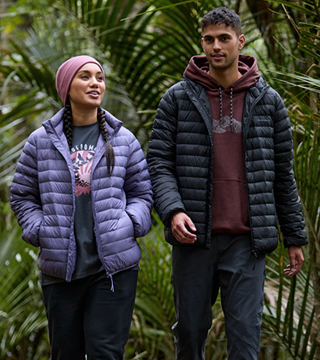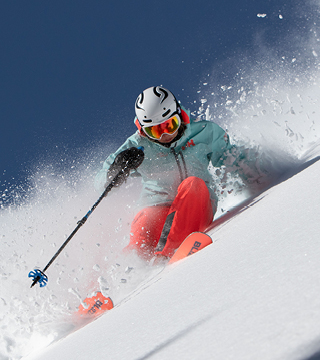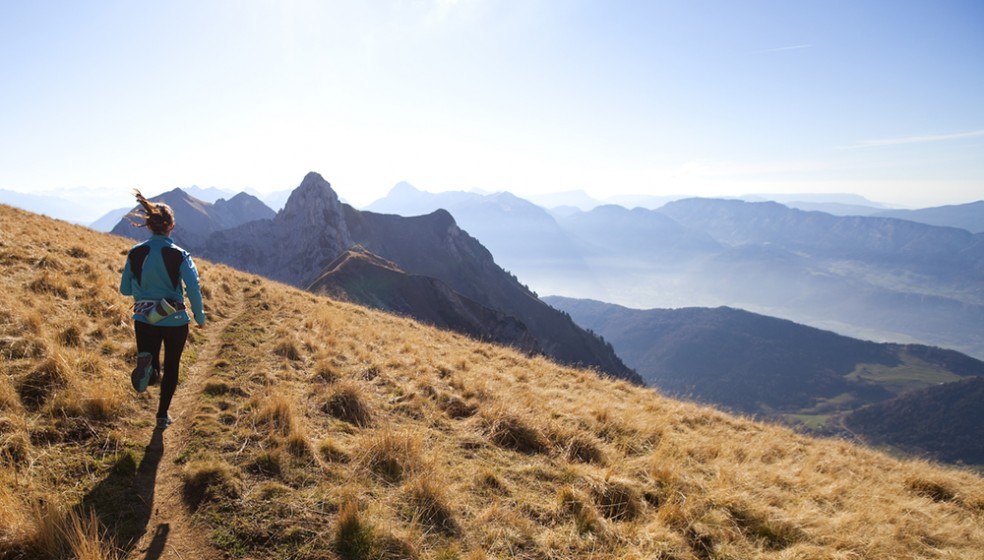If you are planning to venture out of the city onto the trails or into mountains, there are many differences to your regular road run you need to be aware of. The most obvious one is the terrain, as underfoot conditions could throw you anything from mud, dust, tree roots, rocks or rivers. Changing weather conditions may be in the mix, and can be very unpredictable. Having the right gear is important, whether you are only heading out for an hour on a nearby trail, or whether you have a full day mission in the hills planned.
Trail Shoes
Having a specific off-road shoe will make your trail run a more enjoyable and memorable experience. Different brands offer different features, however all trail shoes have a specific tread, designed to tackle variable underfoot conditions. The outsole rubber is designed with added grip and durability in mind. Off-road conditions can be very hard on your shoes; therefore durability becomes very important in comparison to road shoes. The upper material of a trail shoe should be breathable and quick drying to keep your feet dry and blister free. The shoe should be able to drain water quickly, so when you cross rivers or puddle, your shoes are not left heavy and will dry quickly. A thick rubber toe cap is a beneficial feature to protect your toes when running on rocky and uneven terrain as this provides added impact protection. Trail shoes tend to have less cushioning than road specific shoes, as you are running on softer surfaces and a low profile can reduce the likelihood of rolling your ankle. If you find yourself running on the pavement on your way to your local trail, or you are running a mixture of pavement and basic trails, then you may want to consider a city trail shoe. These shoes offer enough cushioning for running on the pavement, but also have a durable outsole with plenty of tread to tackle the trail.
Lightweight Pack
If you are heading out for a long run on the trails, you will need to carry the bare essentials such as energy fuel, hydration, and extra clothing layers. Running specific packs are designed with minimal lightweight material and sit close to your back to prevent movement when you run. The last thing you want is a heavy bag swinging around on your shoulders and weighing you down. The straps of a lightweight pack are designed for comfort to prevent chafing and allow for correct running posture. Compared with traditional backpacks running packs sit higher on the body and have a shorter back length. This moves the waste belt up off the hips and reduces the movement/swing of the pack. A compartment for a hydration bladder and/or drink bottle holders allow you to carry enough fluid to keep you going. If running on a hot day, packs made of a breathable material and shoulder straps facilitate heat loss and help keep you dry. Ultimately, the lighter the pack, the better when it comes to running, but the fit of the pack is crucially important for comfort on the trail.
Clothing
Running specific clothing is designed to keep you cool when it’s hot and warm when it’s cold. Having the right layering system is important to keep your body temperature regulated. If the weather turns nasty, and you don’t have appropriate clothing, things can get pretty serious very quickly. Your base layer should be either a technical t-shirt or a merino/polypropylene t-shirt. Such garments are designed to wick moisture away from your skin as you sweat, keeping you cool and dry. A long sleeved lightweight merino or polypropylene top is perfect for a second layer and will fold up nice and small to fit in your pack. A warm hat or a buff, and woollen or polypropylene gloves should also be carried in your pack. The most important piece of essential clothing that every trail runner should carry on a long run is a waterproof jacket. Outdoor brands, such as Salomon and The North Face have developed technical running jackets that are extremely lightweight, waterproof, seam sealed, and breathable. Having a jacket with a hood can be very comforting if you get stuck in windy cold conditions.
Being prepared is the most important thing to consider. Any long distance trail or mountain race you enter will require you to carry compulsory gear, therefore why not carry it during your training runs. If you are heading out on your own, it is a good idea to take a cell phone and even a map if you are not familiar with the area. A first aid kit and a head torch are also among the bare essentials you should carry in your lightweight pack. When you are not taking part in a planned mountain or trail race, officials, aid stations, and medical staff are not available and it’s up to you to take responsibility for your own safety. Take the time to plan every outing and ensure you have the appropriate gear for the conditions, and most importantly, always let a friend or family member know where you are going. Even if you are only going for an evening jog on a city trail, send a text or leave a note for someone so people know where to look if something were to go wrong.
Have fun on the trails,
See you out there,
Whitney Dagg
Torpedo7
Dunedin


















